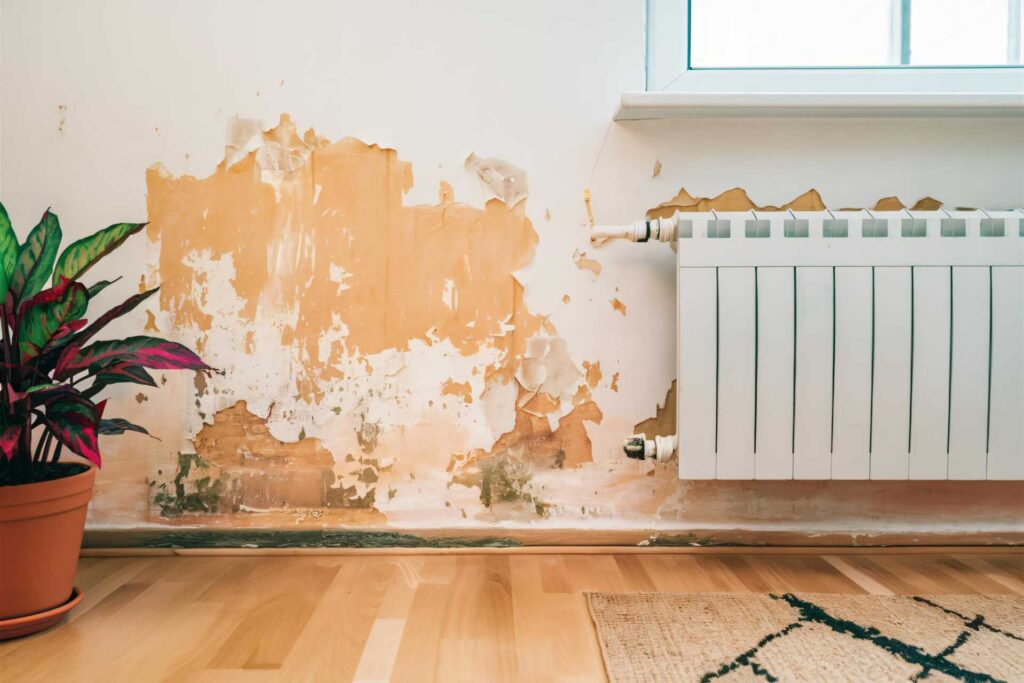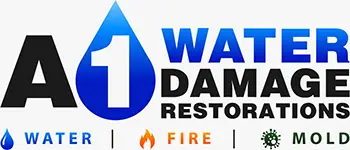
Contents
You may not realize that the aftermath of a storm can be overwhelming, but with the right approach, recovery is possible. From evaluating the extent of the damage to implementing essential steps for protection and restoration, maneuvering through storm damage recovery requires a strategic mindset and proactive actions. By following the seven best tips outlined, you can ensure a smoother path towards restoring your property and safeguarding your home from further harm.
Key Takeaways
- Inspect the property for damage and document with photos.
- Contact insurance promptly and prepare detailed claims.
- Secure property with temporary barriers and security measures.
- Address water damage immediately with extraction and drying.
- Dispose of unsalvageable items and hire professional restoration services.
Assessing the Damage
When evaluating storm damage, the first step is to inspect your property carefully for signs of destruction.
Begin by checking the exterior of your home for any obvious damage such as missing shingles, dented gutters, or broken windows. Walk around your property and look for fallen tree limbs, debris, or any structural issues like leaning fences or damaged walls. Take note of any water pooling near the foundation, as this could indicate drainage problems that need immediate attention.
Inside your home, assess each room methodically. Look for water stains on the ceiling or walls, which could indicate a leaky roof or damaged pipes. Check for any unusual odors that could point to mold or mildew growth. Inspect your appliances, electrical outlets, and HVAC system for any signs of water damage or malfunction.
Don’t forget to document everything with photographs or videos for insurance purposes.
After completing your storm assessment, prioritize safety by addressing any immediate hazards like exposed wires or unstable structures.
Consider hiring professionals for a thorough damage evaluation, especially if you suspect hidden issues. Remember, thorough documentation and a systematic approach will help you navigate the recovery process efficiently.
Contacting Your Insurance Company
When it comes to recovering from storm damage, the first step is contacting your insurance company promptly.
Filing an insurance claim and understanding the coverage details are essential aspects of this process.
Make sure you have all the necessary information ready when reaching out to your insurance provider.
Filing Insurance Claim
Contacting your insurance company after experiencing storm damage is an essential step toward recovering and repairing your property.
When filing an insurance claim, it’s important to understand the different claim types and your policy limits. There are typically two main types of claims: dwelling coverage for your home’s structure and personal property coverage for your belongings. Make sure to review your policy to know what’s covered and the maximum amount your insurance will pay for repairs and replacements.
When contacting your insurance company, be prepared to provide detailed information about the damage, including photos if possible. It’s vital to file your claim as soon as possible to expedite the process.
Your insurance company will assign an adjuster to assess the damage and determine the coverage. Keep records of all communication and document any expenses related to temporary repairs or accommodations.
Understanding Coverage Details
It’s essential to grasp the nuances of your policy to ensure you fully comprehend your insurance coverage details and effectively engage with your insurance provider.
Start by reviewing your policy to identify the coverage types included, such as dwelling, personal property, and additional living expenses. Understanding the policy limits is vital as they determine the maximum amount your insurance company will pay for covered losses.
Take note of any exclusions or limitations that may apply to certain types of damage.
When contacting your insurance company, have your policy number and details of the storm damage ready. Clearly explain the situation and inquire about the specific coverage applicable to your claim.
Ask about the claims process, deductible amount, and any additional documentation required. Keep records of all communication with your insurer, including dates, times, and the names of representatives you speak with.
Documenting the Damage
When recovering from storm damage, it’s essential to document the extent of the destruction.
Take detailed photos of the affected areas, capturing the damage from multiple angles.
Additionally, keep thorough records of any expenses incurred during the recovery process to ensure proper reimbursement from your insurance company.
Detailed Photo Evidence
With storm damage taking a toll on your property, it is vital to meticulously document the extent of the destruction through detailed photo evidence. Proper photo organization and evidence preservation are fundamental steps in ensuring a smooth recovery process. By capturing high-quality images of the damage, you provide valuable proof for insurance claims and create a visual record of the restoration journey.
| Reasons to Document Damage | Tips for Detailed Photo Evidence |
|---|---|
| 1. Insurance Claims | 1. Start with an overview shot |
| 2. Before & After Comparisons | 2. Take close-ups of specific damage |
| 3. Restoration Progress Tracking | 3. Include timestamps in photos |
| 4. Legal Protection | 4. Use a mix of wide and detailed shots |
Remember to photograph all affected areas, including both interior and exterior spaces. Confirm that your photos are clear and well-lit and capture the full extent of the storm’s impact. By meticulously documenting the damage through detailed photo evidence, you set yourself up for a successful recovery process.
Keep Detailed Records
Following the meticulous process of capturing detailed photo evidence of the storm damage, the next essential step in your recovery journey is keeping detailed records of the documented damage.
Record keeping and maintaining a damage inventory are significant aspects of ensuring a smooth recovery process. Here are some key points to take into account:
Create a central location: Establish a dedicated folder or digital file where you can store all your records, including photos, receipts, and communication with insurance companies.
Document all interactions: Keep a log of all conversations, emails, and phone calls related to the damage. Note down important details such as dates, names, and key points discussed.
Organize by category: Separate your records into categories such as structural damage, personal property loss, and repair expenses to facilitate easy access and reference.
Regularly update your records: As you progress through the recovery process, make sure to consistently update your records with new information, estimates, and any changes in status.
Securing Your Property
After a storm, securing your property is vital to prevent further damage and ensure the safety of your home. Start by evaluating the damage to your property and identifying vulnerable areas that need immediate attention.
Consider using temporary barriers such as sandbags or plywood to block off areas with broken windows or doors. These barriers can help prevent additional water or debris from entering your home.
Another important step in securing your property is reviewing fencing options. Inspect your fence for any damage caused by the storm, as a damaged fence can compromise the security of your property.
If needed, repair or reinforce the fence to maintain the boundary of your property and keep unwanted visitors out.
In addition to physical barriers, consider installing security measures like motion-sensor lights or security cameras to deter potential intruders. These added security features can provide peace of mind while your property is on the path to recovery.
Remember to document all steps taken to secure your property for insurance purposes. Keeping detailed records of the measures you’ve implemented can help streamline the claims process and ensure you receive proper compensation for any storm-related damages.
Water Extraction and Drying
When addressing water extraction and drying after a storm, the key priority is to act swiftly to prevent further damage to your property. Time is of the essence when dealing with water damage, so follow these steps to ensure effective flood prevention and moisture control:
Prompt Action: Begin by extracting any standing water using specialized equipment or professional services. The longer water sits, the more damage it can cause.
Thorough Drying: Utilize dehumidifiers and fans to dry out the affected areas completely. Pay special attention to hidden spaces where moisture can linger.
Remove Damaged Items: Discard any items that can’t be salvaged, as they can harbor mold and bacteria, further complicating the situation.
Professional Assessment: Consider hiring a professional water damage restoration service to assess the extent of the damage and ensure thorough restoration. They have the expertise and equipment to handle the situation effectively.
Mold Prevention and Remediation
Understanding the potential health risks and structural implications associated with mold growth is essential for effectively addressing mold prevention and remediation in the aftermath of storm damage.
Mold can develop quickly in damp and humid environments, often appearing as discolored patches on walls, ceilings, or floors. Identifying mold early is imperative to prevent it from spreading and causing further damage.
If you spot mold in your home after a storm, it’s important to act promptly to remove it. To avoid inhaling mold spores, begin by wearing protective gear such as gloves, goggles, and a mask. Then, use a mixture of water and detergent to scrub the affected areas thoroughly.
For larger infestations, consider using commercial mold removal products or seeking professional assistance.
In addition to removing existing mold, it’s essential to address the underlying cause of moisture that led to its growth. This may involve fixing leaks, improving ventilation, or reducing humidity levels in your home.
Hiring Professional Restoration Services
Considering the complexity and extent of storm damage, enlisting the expertise of professional restoration services can ensure a thorough and efficient recovery process.
When hiring professional restoration services, keep the following tips in mind to facilitate a smooth restoration journey:
Assess Restoration Techniques: Look for companies that employ up-to-date restoration techniques to ensure effective and long-lasting results. Advanced methods like thermal imaging for water damage detection or eco-friendly cleaning processes can make a significant difference in the restoration outcome.
Verify Contractor Qualifications: Prioritize hiring contractors with the necessary qualifications and certifications. Ensure they’re licensed, bonded, and insured to confirm that the work will be carried out professionally and in compliance with industry standards.
Seek References and Reviews: Before finalizing a restoration service provider, check their references and online reviews. Feedback from previous clients can offer valuable insights into the quality of work, reliability, and customer service provided by the restoration company.
Request Detailed Quotes: Obtain detailed quotes from multiple restoration services to compare pricing, services included, and estimated timelines. Transparent pricing and a clear outline of the restoration process can help you make an informed decision and avoid any surprises during the restoration project.
Final Thoughts
Now that you have taken the necessary steps to assess, document, secure, and address storm damage, your focus should shift toward preventing mold growth and ensuring a thorough restoration process. By prioritizing mold prevention measures and considering professional restoration services, you can effectively recover from the storm’s aftermath and restore your property to its pre-damage condition. Remember, proactive measures now can save you time and money in the long run.
Recent Posts
Top Strategies for Post-Flood Mold Removal
When faced with post-flood mold, you need to be equipped with the right strategies for
5 Best Practices for Mold Removal After Flooding
When tackling mold removal post-flooding, remember to start by inspecting and evaluating the extent of
Why Prioritize Mold Removal After Flooding?
Did you know that mold can start growing in your home within just one to
